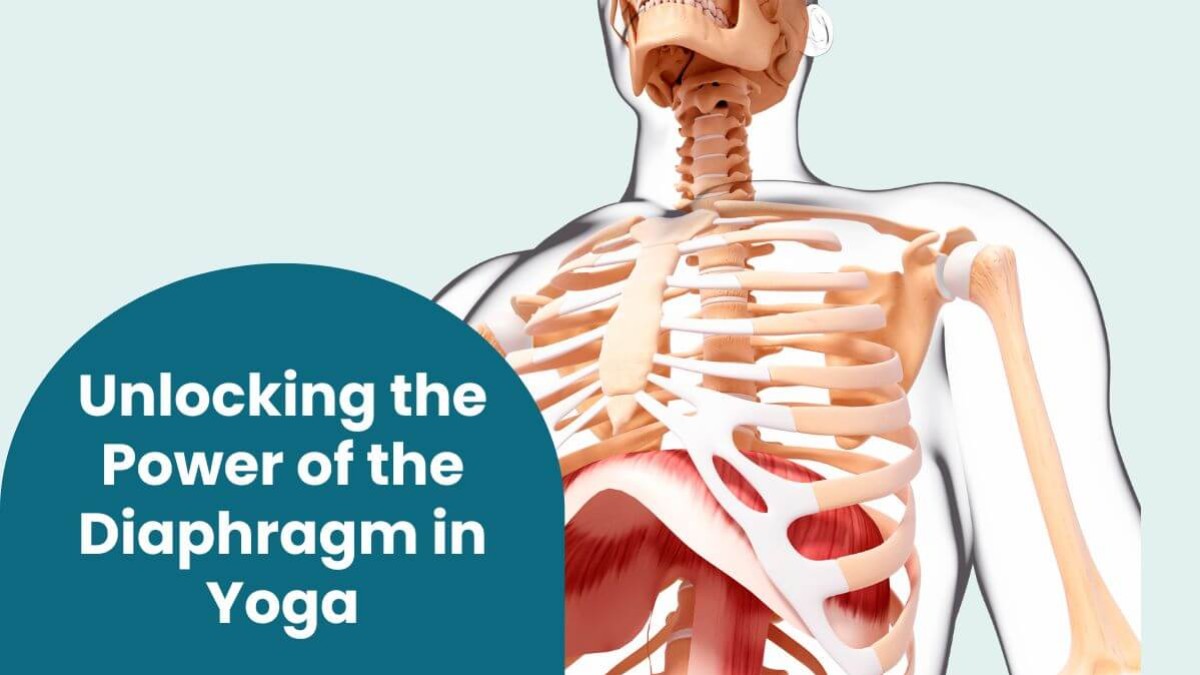Unlocking the Power of the Diaphragm in Yoga

Enhance Your Postures and Practice With and Understanding of the Diaphragm
The diaphragm in yoga
In the practice of yoga, we often emphasize alignment, balance, and flexibility in our asanas, but one crucial element is frequently overlooked: the diaphragm. This dome-shaped muscle is essential for effective breathing and plays a significant role in enhancing stability, movement, and posture in yoga. Understanding the function of the diaphragm in yoga can deepen and transform your approach to asana practice.
.

.
The Diaphragm in Yoga: A Biomechanical Overview
.
The diaphragm is a dome-shaped muscle located at the base of the ribcage, separating the thoracic cavity (where the lungs and heart reside) from the abdominal cavity. While its primary function is to facilitate breathing, its influence extends far beyond respiration, impacting posture, spinal stability, and the fluidity of movement during yoga asanas.
.

.
During inhalation, the diaphragm contracts and moves downward, creating more space in the thoracic cavity and allowing the lungs to expand. On exhalation, it relaxes and moves upward, pushing air out of the lungs. This dynamic movement is crucial not only for breathing but also for maintaining stability and alignment in yoga postures.
.
The Role of the Diaphragm in Yoga Asanas
.
The movement of the diaphragm in yoga is directly linked to how we execute and experience various postures. Whether you're practicing standing postures, backbends, twists, or balancing postures, the diaphragm influences your stability, alignment, and ease of movement.
Tadasana (Mountain)
In Tadasana, the diaphragm’s movement helps create space in the torso and promote spinal elongation. As you inhale, the diaphragm descends, allowing the ribs to expand laterally. This expansion stabilizes the posture, making it feel both grounded and uplifted—an essential foundation for all standing poses.
.

.
Ustrasana (Camel)
Backbends like Ustrasana require careful attention to spinal alignment, and the diaphragm plays a key role in this. As you inhale, the diaphragm’s descent increases intra-abdominal pressure, which can help stabilize the lumbar spine and allows for a more supported backbend.
.

.
Paschimottanasana (Seated Forward Fold)
In forward folds, such as Paschimottanasana, the diaphragm’s movement during exhalation helps deepen the fold. As the diaphragm ascends, it gently pulls on the abdominal organs, encouraging more space to fold into and for the fold to come from the hips rather than from the lower back.
.

.
Ardha Matsyendrasana (Seated Twist)
In twisting postures like Ardha Matsyendrasana, the diaphragm in yoga plays a dual role: it stabilizes the spine during inhalation and helps deepen the twist on exhalation. This is why it may feel good to focus on lengthening the spine on the inhale, and twisting on the exhale.
.

.
Integrating Diaphragmatic Awareness in Your Yoga Practice
To fully harness the power of the diaphragm in yoga, consider integrating diaphragmatic awareness into your practice and into your classes if you are a yoga teacher.
- Focus on the Breath: Before entering any posture, take a moment to observe the movement of your diaphragm with each breath. This awareness can establish a mindful connection that enhances your practice.
- Enhance Alignment: In each posture, use the inhalation to create space and length, and the exhalation to ground and stabilize the body. The diaphragm’s movement can guide these subtle adjustments.
- Smooth Transitions: Let the diaphragm guide fluid transitions between postures. Diaphragmatic breathing can make these movements smoother and more controlled, reducing strain and promoting ease.
.
Conclusion: The Diaphragm and Yoga—A Key to Deeper Asana Practice
The diaphragm is more than just a muscle involved in breathing; it plays a foundational role in yoga practice by influencing stability, alignment, and fluidity in asanas. By understanding and engaging the diaphragm in yoga, you can enhance your postures, improve transitions, and cultivate a more mindful and integrated practice for yourself and your students.
Are you a yoga teacher who wants to finally understand anatomy, ditch doubt, and teach with confidence and high impact that keeps students coming back?
JOIN NOW FOR FREE!
Yoga Teachers Impact: Effective Cueing & Teaching Techniques
Categories: : Diaphragm, Yoga Anatomy
 Trish Corley
Trish Corley 
